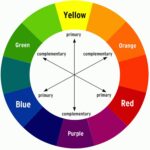Right-sided lower back pain can stem from various sources, including issues with bones, muscles, joints, organs in the abdomen and pelvis, and even reproductive health. Determining the exact cause is crucial for effective treatment. This article explores the potential reasons behind right-side back pain and discusses diagnosis and treatment options.
:max_bytes(150000):strip_icc()/iStock-619375976-58969b415f9b5874ee9edf7e.jpg)
Potential Causes of Right-Side Back Pain
Right lower back pain can be broadly categorized into three main groups:
1. Mechanical and Structural Problems: These involve injuries or conditions affecting the musculoskeletal system, such as:
- Muscle Strain: Overuse, sudden movements, or injuries can strain back muscles, causing localized pain, stiffness, and limited range of motion.
- Ligament Sprain: Stretching or tearing ligaments connecting bones can result in pain similar to muscle strain, often occurring after falls or accidents.
- Spinal Stenosis: Narrowing of the spinal canal puts pressure on nerves, leading to burning pain, often radiating down the leg and worsened by standing or walking.
- Sacroiliac Joint Dysfunction: Problems with the joint connecting the spine and pelvis cause lower back pain, potentially stemming from trauma or conditions like ankylosing spondylitis.
- Herniated Disc: A ruptured disc can compress nerves, causing radiculopathy with pain, numbness, and tingling radiating down one leg.
- Scoliosis: Curvature of the spine can lead to muscle imbalances and pain on one side of the lower back.
- Spinal Cysts and Tumors: These can press on nerves, causing localized or radiating pain, weakness, and other neurological symptoms.
- Bone Spurs: Abnormal bone growths, often due to arthritis, can press on nerves, causing pain and neurological symptoms.
- Fractures: Spinal fractures from accidents can cause severe pain, neurological deficits, and require immediate medical attention.
2. Inflammatory Conditions:
- Ankylosing Spondylitis: This type of arthritis causes inflammation and fusion of spinal joints, resulting in stiffness, pain, and limited mobility.
3. Other Medical Conditions: Several medical conditions unrelated to the spine can cause right lower back pain:
- Kidney Issues: Kidney infections (pyelonephritis) and kidney stones can cause sharp pain in the lower back, often accompanied by fever, chills, and urinary symptoms.
- Gallstones: Gallstones can cause intense pain in the upper right abdomen that may radiate to the right shoulder and back.
- Appendicitis: Inflammation of the appendix typically causes pain in the lower right abdomen but can sometimes radiate to the back.
- Irritable Bowel Disease (IBD): IBD can lead to sacroiliitis (inflammation of the sacroiliac joint), causing lower back pain.
- Abdominal Aortic Aneurysm: A weakened and bulging area in the aorta can cause back pain, though it’s often asymptomatic and requires urgent medical attention if ruptured.
4. Gynecological and Reproductive Conditions:
- Pelvic Inflammatory Disease (PID): Infection of the female reproductive organs can cause lower abdominal pain radiating to the lower back.
- Endometriosis: Uterine tissue growing outside the uterus can cause lower back pain, especially if it affects the area.
- Uterine Fibroids: Benign growths in the uterus can press on nerves and cause lower back pain.
- Menstrual Disorders: Hormonal changes during menstruation can trigger lower back pain.
- Ovarian Cysts or Tumors: These can cause lower abdominal or pelvic pain that may radiate to the lower back.
- Pregnancy: Hormonal changes, weight gain, and shifts in the center of gravity during pregnancy commonly lead to lower back pain.
- Testicular Torsion (Males): Twisting of the testicle can cause severe groin pain that may radiate to the lower back. It’s a medical emergency.
Diagnosing Right-Side Back Pain
Diagnosing the cause requires a thorough evaluation, including:
- Physical Exam: Assessing posture, range of motion, tenderness, and neurological function.
- Medical History: Understanding past injuries, medical conditions, and lifestyle factors.
- Imaging Tests: X-rays, CT scans, and MRIs can visualize bones, joints, and soft tissues to identify structural abnormalities.
- Nerve Conduction Studies: Evaluate nerve function and identify potential nerve compression.
- Blood Tests: Rule out infections or other medical conditions.
Treatment for Right-Side Back Pain
Treatment depends on the underlying cause and may include:
- Pain Management: Over-the-counter or prescription pain relievers, muscle relaxants.
- Physical Therapy: Exercises to strengthen muscles, improve flexibility, and correct posture.
- Spinal Manipulation: Chiropractic adjustments to address joint dysfunction.
- Injections: Steroid injections to reduce inflammation and pain.
- Surgery: In cases of severe structural damage, tumors, or certain medical conditions.
When to Seek Immediate Medical Attention (“Red Flags”)
Seek immediate medical care if you experience:
- Sudden and severe pain.
- Pain after a significant injury.
- Persistent pain that doesn’t improve.
- Pain that wakes you up at night.
- Difficulty walking or standing.
- Loss of bladder or bowel control.
- Loss of consciousness.
- Numbness or tingling in the pelvis or legs.
- Fever. These symptoms could indicate a serious condition requiring urgent treatment.
This comprehensive overview provides valuable insights into the potential causes, diagnosis, and treatment of right-side lower back pain. Remember to consult a healthcare professional for accurate diagnosis and personalized treatment plan. They can help determine the specific cause of your pain and recommend the most appropriate course of action.
